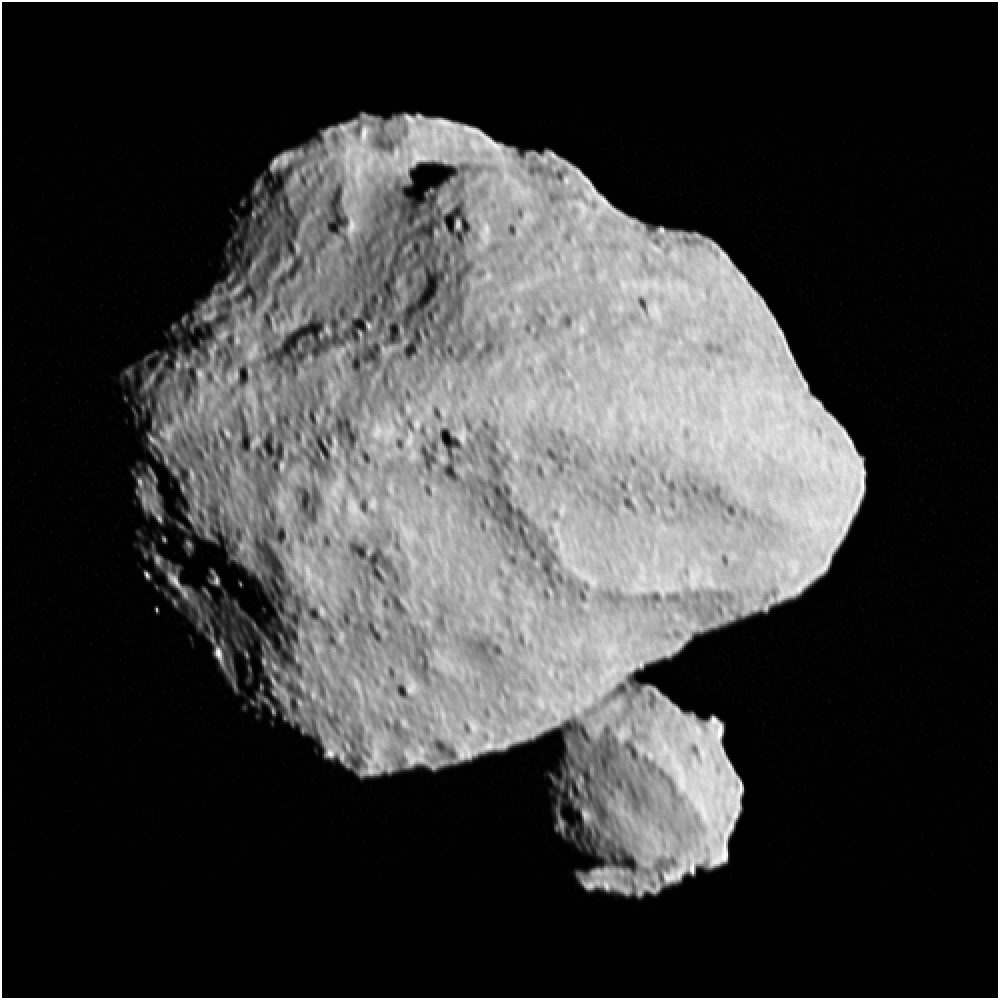
Posted on 11/04/2023 11:28:21 AM PDT by MtnClimber
Explanation: Last Wednesday the voyaging Lucy spacecraft encountered its first asteroid, 152830 Dinkinesh, and discovered the inner-main belt asteroid has a moon. From a distance of just over 400 kilometers, Lucy's Long-Range Reconnaissance Imager captured this close-up of the binary system during a flyby at 4.5 kilometer per second or around 10,000 miles per hour. A marvelous world, Dinkinesh itself is small, less than 800 meters (about 0.5 miles) across at its widest. Its satellite is seen from the spacecraft's perspective to emerge from behind the primary asteroid. The asteroid moon is estimated to be only about 220 meters wide.
For more detail go to the link and click on the image for a high definition image. You can then move the magnifying glass cursor then click to zoom in and click again to zoom out. When zoomed in you can scan by moving the side bars on the bottom and right side of the image.

“The asteroid moon is estimated to be only about 220 meters wide.”
What is its orbital velocity in furlongs per fortnight?
Could an African swallow fly with it in outer space to change the orbital velocity?
Not a European swallow?
No way a European swallow could fly with that!
What would be interesting to see would be a video of the smaller moon orbiting around the asteroid. I wonder if its orbit is more or less circular, or eccentric.
Too bad Lucy was moving so fast.
Disclaimer: Opinions posted on Free Republic are those of the individual posters and do not necessarily represent the opinion of Free Republic or its management. All materials posted herein are protected by copyright law and the exemption for fair use of copyrighted works.